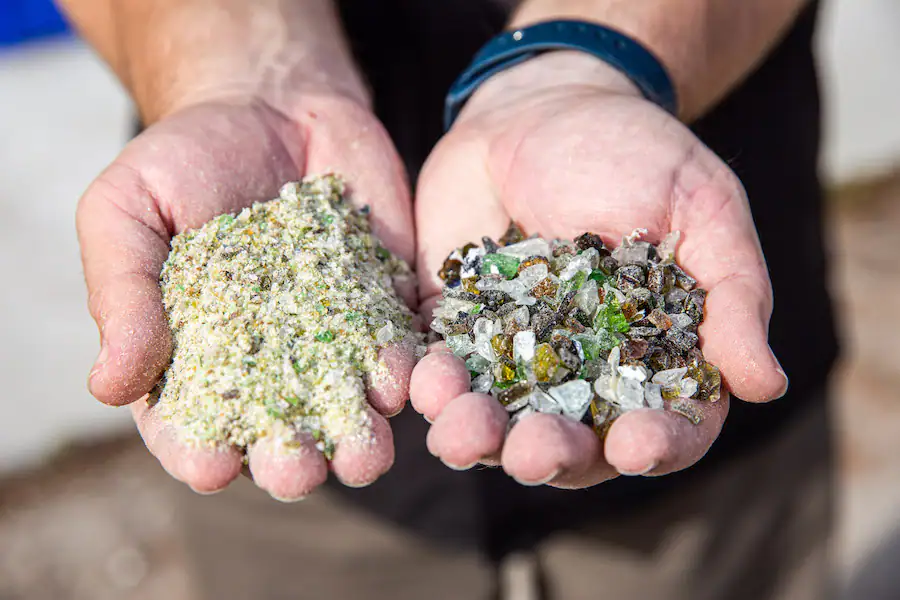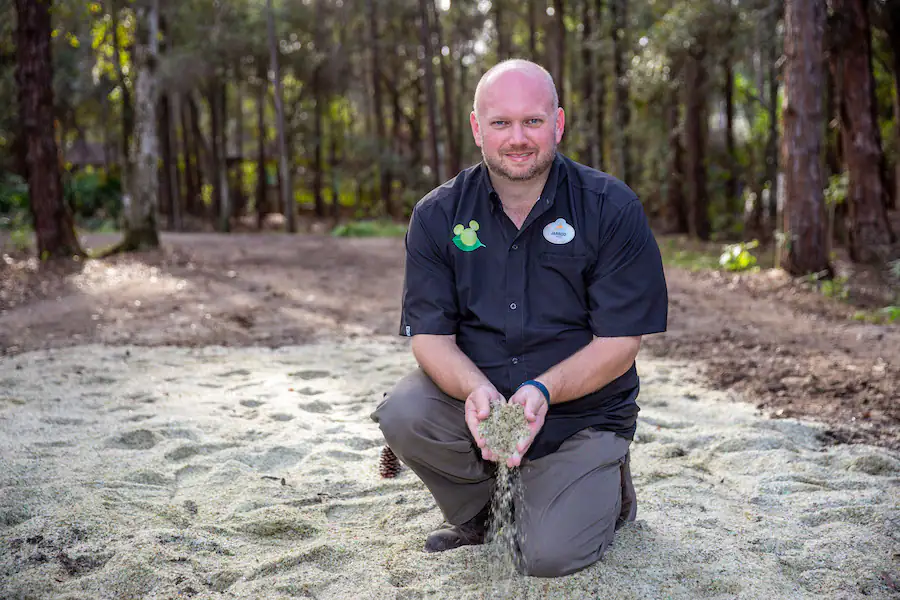
You probably already know that water is the most used natural resource. It’s widely available for many of us, and every living thing needs it to live. But did you know that sand is the second most used natural resource? It’s true!
RELATED: VIDEO: Captain Jack Sparrow Reacts to Guest’s Prosthetic Leg – “He’s Got Rum In There!”
According to a report made by Discover Magazine, sand is the second most used natural resource. It’s used to produce asphalt, cement, glass, and more, making it a natural resource that “plays a major role in every aspect of our lives, from infrastructure and roads to our personal electronic devices.” Unfortunately, the demand for sand has dramatically increased recently, and unsustainably mining and importing sand can have detrimental consequences for our environment.
RELATED: VIDEO: Move Over, EPCOT – This Disney Park’s Elsa Animatronic Is the Best in the Business!
That’s why Walt Disney World Resort is doing its part by making its own sand out of recycled glass.
Yes, you read that right! In Disney’s Fort Wilderness Resort, there’s a designated backstage area where recycled glass bottles are pulverized and turned into sand and gravel. Check out this video for the whole story.
@disneyparks Cheers to creating a more sustainable future ♻️🐴 #Recycle #Disney #GlassBottle #Glass #DisneyWorld #Environment #Sand #Sustainability #Horse #Conservation #DisneyCastLife
RELATED: VIDEO: Magic Kingdom Updates Classic Attraction to Make It Even M. ore Inclusive
Sand doesn’t just play a major role in our daily lives, but it also plays a significant role in the environment. Most notably, sand prevents our shorelines from eroding away or even washing away due to rising sea levels, protecting us from the consequences of climate change.
RELATED: VIDEO: Check Out a Close Encounter With This Fan-Favorite Flightless Bird at Animal Kingdom
By making its own sand out of recycled glass bottles, Walt Disney World Resort achieves multiple sustainability goals at once. For one, finding a use for recycled glass bottles creates less waste in landfills. For another, making its own sand protects the much-needed sand from being mined or imported unsustainably.
Hopefully, this practice will begin gaining more traction in other places too!

 DisneyTips.com Your Guide To A Great Disney Vacation
DisneyTips.com Your Guide To A Great Disney Vacation





